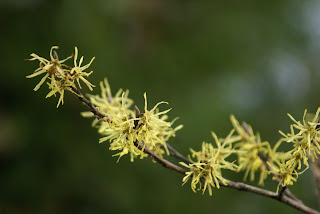If you keep your eyes open, you can see some of the fall specialties in evidence. A four-point buck, neck swollen from testosterone, picks his way across my backyard, oblivious to everything and everyone but does. (This is the time of year you see road-killed deer whenever you run an errand). Squirrels, their autumn breeding season in full swing, scamper up tree trunks in twos and threes and fours, spiraling their way like long gray scarves. Oak trees are finally releasing their crispy brown leaves to pile up in the gutters. Oaks are the last to let go in fall—I’ve heard Garrison Keeler explain it as vanity, but since they are among the last to leaf out in spring, it all evens out.
A northern harrier (aka marsh hawk) moseys his way across the marsh at Huntley Meadows. Banking and turning at walking speed, he checks out the flocks of mallards, testing for any sign of weakness as they explode off the surface. The harrier, rump showing the bright white diamond of feathers that screams “field mark!” to any birder, milks every erg of energy from the breeze with an ease and efficiency any America’s Cup skipper would sell his soul for. And the harrier does it in three dimensions to boot. He will linger here for a few days before moving on for the winter to the more expansive Potomac River marshes, sharing the area with the night shift of short-eared owls.
Canada geese, too big for the harrier to bother with, are busy harvesting a summer’s worth of marsh sedges. Think of them as feathered sheep, grazing on the swamp grasses, pulling up the stalks to feed on the calorie-rich rootstocks. Bow waves of grass blades form as they swim through the shallow water, past the skulking Virginia rails who have taken up residence in the marsh and pad daintily between the faded brown stalks of cat-tails, long since gone to seed. A pair of hooded mergansers newly arrived from points north, skirts the edges of the marsh, jumpy as cats, while northern shovelers doze in the watery sunlight.
Here and there, almost like after thoughts, or maybe grace notes, American witch hazel is in full bloom, forsythia-yellow blossoms the same color as maple leaves and easily overlooked amid all the riot of color.

The planet is turning, winter closing in, but not just yet. There is still business to be done, still things to do before the cold falls and the hemisphere sleeps.
No comments:
Post a Comment